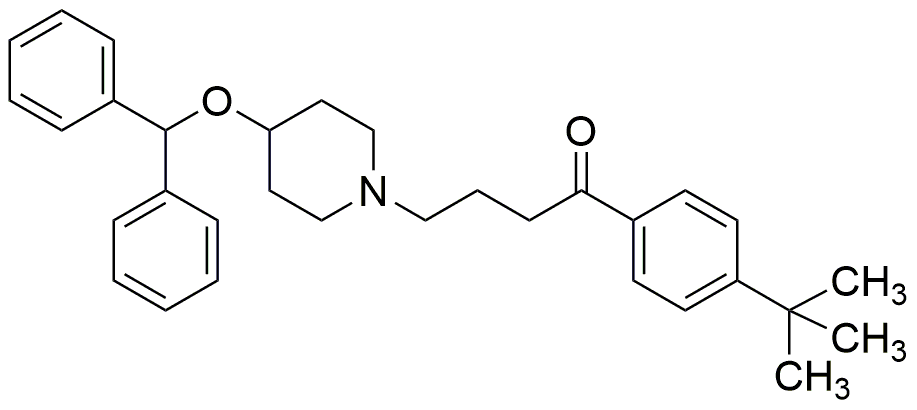Ebastine is widely utilized in research focused on:
- Allergy Relief: Commonly used as an antihistamine, it effectively alleviates symptoms of allergic rhinitis and urticaria, providing relief for patients suffering from seasonal allergies.
- Pharmaceutical Formulations: Its properties make it a key ingredient in various over-the-counter medications, enhancing the effectiveness of allergy treatments while minimizing drowsiness compared to older antihistamines.
- Clinical Research: Frequently studied in clinical trials to evaluate its efficacy and safety, contributing to advancements in allergy management and improving patient outcomes.
- Dermatological Applications: Used in topical formulations for skin allergies, it helps reduce inflammation and itching, making it beneficial in dermatology practices.
- Combination Therapies: Often combined with other medications to enhance therapeutic effects, it is particularly useful in multi-drug regimens for complex allergy cases.
Información general
Propiedades
Seguridad y normativas
Aplicaciones
Ebastine is widely utilized in research focused on:
- Allergy Relief: Commonly used as an antihistamine, it effectively alleviates symptoms of allergic rhinitis and urticaria, providing relief for patients suffering from seasonal allergies.
- Pharmaceutical Formulations: Its properties make it a key ingredient in various over-the-counter medications, enhancing the effectiveness of allergy treatments while minimizing drowsiness compared to older antihistamines.
- Clinical Research: Frequently studied in clinical trials to evaluate its efficacy and safety, contributing to advancements in allergy management and improving patient outcomes.
- Dermatological Applications: Used in topical formulations for skin allergies, it helps reduce inflammation and itching, making it beneficial in dermatology practices.
- Combination Therapies: Often combined with other medications to enhance therapeutic effects, it is particularly useful in multi-drug regimens for complex allergy cases.
Documentos
Hojas de datos de seguridad (HDS)
La SDS proporciona información de seguridad completa sobre la manipulación, el almacenamiento y la eliminación del producto.
Especificación del producto (PS)
La PS proporciona un desglose completo de las propiedades del producto, incluida la composición química, el estado físico, la pureza y los requisitos de almacenamiento. También detalla los rangos de calidad aceptables y las aplicaciones previstas del producto.
Certificados de análisis (COA)
Busque certificados de análisis (COA) ingresando el número de lote del producto. Los números de lote y de partida se pueden encontrar en la etiqueta de un producto después de las palabras "Lote" o "Lote".
Número de catálogo
Número de lote/lote
Certificados de origen (COO)
Este certificado de origen confirma el país en el que se fabricó el producto y también detalla los materiales y componentes utilizados en él y si se deriva de fuentes naturales, sintéticas u otras fuentes específicas. Este certificado puede ser necesario para cumplir con las normativas aduaneras, comerciales y regulatorias.
Número de catálogo
Número de lote/lote
Hojas de datos de seguridad (HDS)
La SDS proporciona información de seguridad completa sobre la manipulación, el almacenamiento y la eliminación del producto.
DownloadEspecificación del producto (PS)
La PS proporciona un desglose completo de las propiedades del producto, incluida la composición química, el estado físico, la pureza y los requisitos de almacenamiento. También detalla los rangos de calidad aceptables y las aplicaciones previstas del producto.
DownloadCertificados de análisis (COA)
Busque certificados de análisis (COA) ingresando el número de lote del producto. Los números de lote y de partida se pueden encontrar en la etiqueta de un producto después de las palabras "Lote" o "Lote".
Número de catálogo
Número de lote/lote
Certificados de origen (COO)
Este certificado de origen confirma el país en el que se fabricó el producto y también detalla los materiales y componentes utilizados en él y si se deriva de fuentes naturales, sintéticas u otras fuentes específicas. Este certificado puede ser necesario para cumplir con las normativas aduaneras, comerciales y regulatorias.


